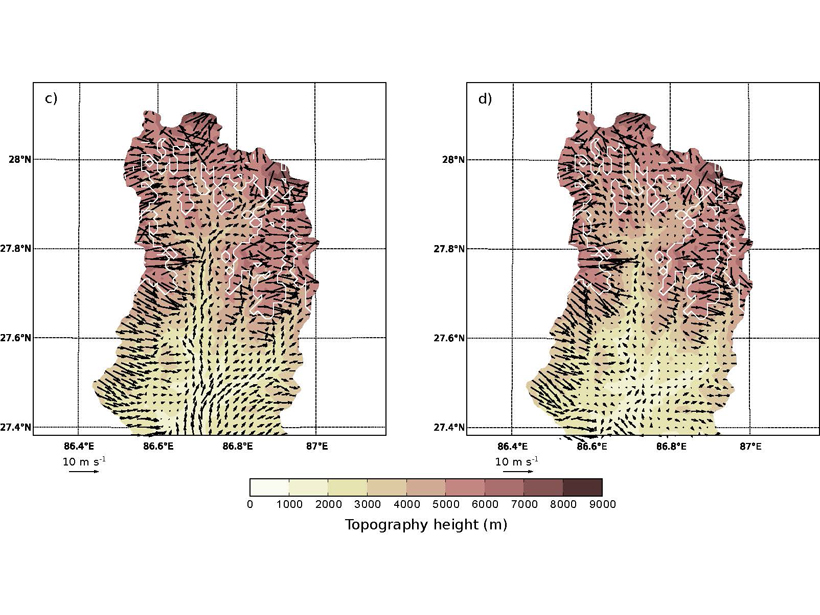Source: Journal of Geophysical Research: Atmospheres
Surface winds in mountainous regions vary greatly in space and time. Understanding the processes that control these variabilities is important, as the wind can affect air temperature, cloud, rain and snow. Potter et al. [2018] use both model simulations and field observations of the Dudh Koshi valley in Nepal to investigate the driving factors of diurnal and seasonal variations in this Himalayan region. This work is the first such high resolution (1 kilometer) detailed modeling to investigate what is driving the wind in the valley, and the effects of the glaciers on the wind.
The results show that the pattern and magnitude of surface winds varies significantly over time (on a daily basis and seasonal basis) and across space (for example, up valley and down valley). The factors influencing this variability include the pressure gradient, advection, and turbulent vertical mixing of air. The presence of glaciers is also a factor, which suggests how local winds may change in future if glaciers shrink.
Citation: Potter, E. R., Orr, A., Willis, I. C., Bannister D., & Salerno, F. [2018]. Dynamical drivers of the local wind regime in a Himalayan valley. Journal of Geophysical Research: Atmospheres, 123, 13,186–13,202. https://doi.org/10.1029/2018JD029427
—Minghua Zhang, Editor-in-Chief, JGR: Atmospheres
Text © 2019. The authors. CC BY-NC-ND 3.0
Except where otherwise noted, images are subject to copyright. Any reuse without express permission from the copyright owner is prohibited.

